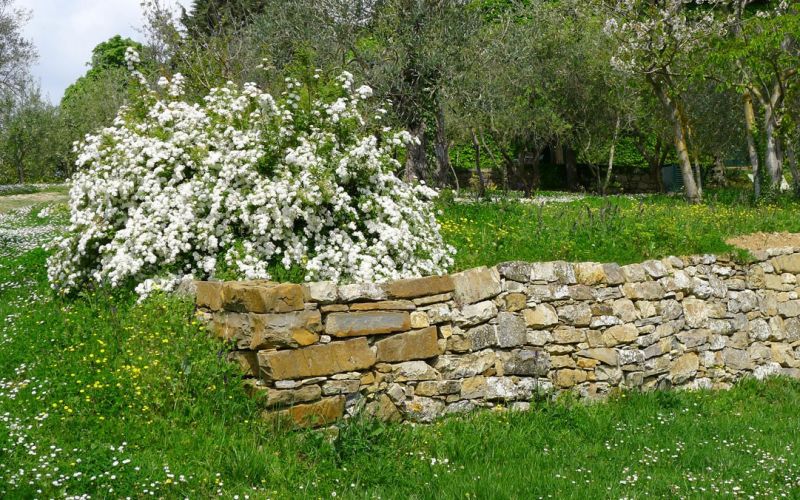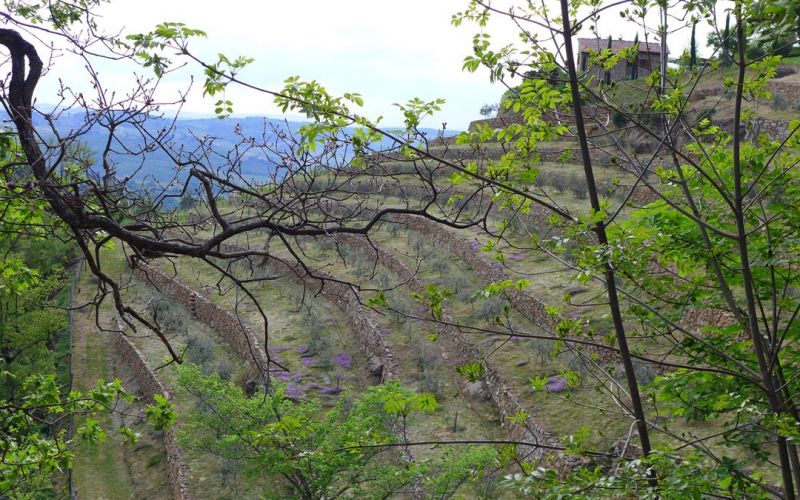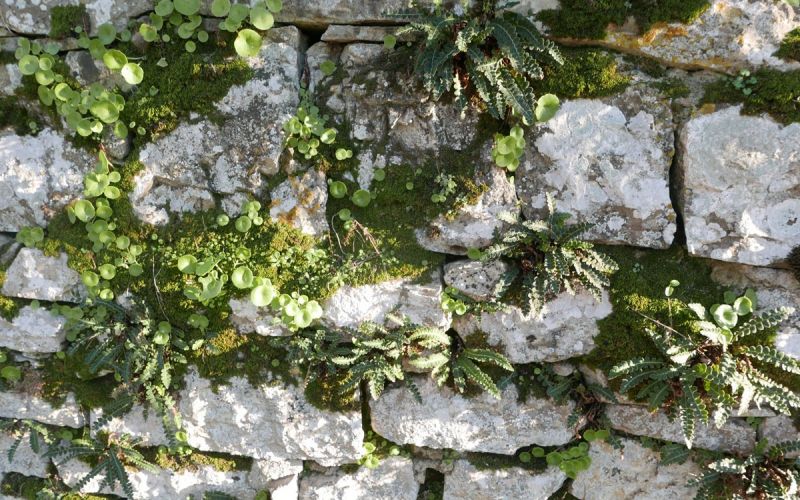Dry-stone walls
The ancestral art of dry-stone walling, of which you can see a testimony in Villa le Barone in Panzano in Chianti, has been recently inscribed on the UNESCO Intangible Cultural Heritage list. This rural art has shaped numerous and diverse landscapes, in all parts of the world, but also in Tuscany and Chianti. The stones are assembled without mortar, by stacking and overlapping them, to wedge them solidly together.
They have to be carefully selected and positioned, and the appropriate thickness of each section of the wall has to be adequately determined. This rural technique has shaped numerous landscapes, contributing to the development of diverse types of habitat and agriculture. In Chianti, olive trees and vineyards are mostly growing on the terraces created. Dry-stone walls have played a vital role in preventing landslides, floods and avalanches, and in combating erosion and desertification of the land, enhancing biodiversity and creating adequate microclimatic conditions for agriculture.
Unfortunately, with the rural exodus after the Second World War, many dry-stone walls have not been maintained and have been unfortunately falling down.
Guests will be however able to admire dry-stone walls in Villa le Barone’s gardens.














